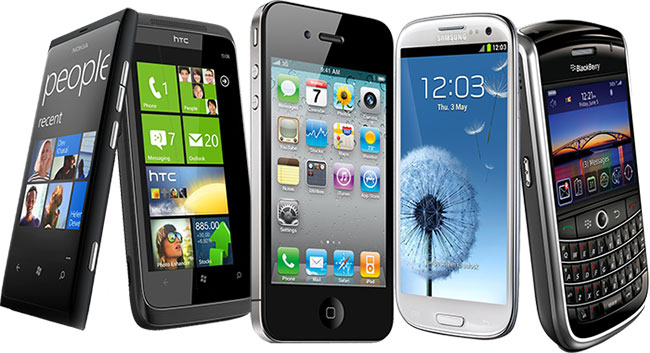It seems that everyone these days has a plethora of mobile apps, and at least one device to run them on. It doesn’t seem to matter which side of the law you’re on — both sides are escalating their efforts to outdo the other in terms of technology and performance.
Though cell phones started as a simple communication device, it has taken one a different avatar today with the capability to communicate in multiple formats. Applications are being built every day that enable the cell phones to be beyond just a simple communication tool.

Mobile Apps Used In Crime Scene Processing
Take the area of crime scene processing. Driven by necessity, Dr. Edgard Espinoza, deputy director of the United States Fish and Wildlife Service Forensic Laboratory, wondered if there wasn’t a better way to assist agents who encounter crime scenes singly or in pairs. In urban environments, a crime scene will get five or six people working on it, but in the wilderness, there’s much more land to cover, and fewer people working it.
And when Dr. Espinoza saw the potential of tablet devices, he saw the possibility of applying them to some of the issues that the USFWS agents dealt with regularly.
“Typical best practices for processing crime scenes always talk about teams of people,” said Espinoza. “[But since] our agents are often working alone, or sometimes with one partner, we needed a way to make it easier.” Making it easier on the agents is even more of a priority because working alone in the field often means that procedural confusion sets in.
The tablets, though, had the ability to help with all of that. “We could use this tool to document the scene, but also to map the scene, to make notes about each item of evidence we collect — and, when we’re done with the scene, have the app print out the chain of custody, the document of what was recorded, and the property receipt form that stays in a suspect’s house, documenting anything we received from it.”
There are limitations, though, and they’re in hardware, not software. Memory is no longer an issue, but for true evidentiary work, a high-resolution camera is needed. Apple’s current top-of-the-line iPad (and most other tablet manufacturers as well) offers a 5 mega-pixel camera, which is fine for corroborating “yes, that’s what I saw.” It’s not good, though, for forensic photography, such as for tire tracks, fingerprints, footwear impressions, or any other situation in which a high-resolution image would be required for a close examination.
Mobile Apps Used as Forensic Data
With the vast number of models of mobile devices on the market, and more and more coming in the breakneck pace we’re accustomed to, it’s a difficult task that requires a forensics company to maintain over 10,000 device profiles, and add more every day. One company, Cellebrite, has managed to do just that, claiming a fifty percent market share for its Universal Forensic Extraction Device tool. UFED is used to help law enforcement agencies extract data, including its file systems, data that might have been deleted, any pictures, contacts, and call logs.
Of course, the device might be locked — what then? Unlocking a phone’s four-digit PIN can be done by brute force, if the operating system will allow it. The vendor can assist as well, if the paperwork is in order. Apple “can extract certain categories of active data from passcode-locked iOS devices,” a portion of the company’s legal process guidelines say. Yet it cannot provide an actual passcode. Accessible data is limited to active, unencrypted, user-generated files contained in Apple’s native apps on those devices using iOS 4 or higher. They can get you audio files, videos, photos, call history, contacts and SMS messages. Yet they can’t get at data used in third-party apps, email, or calendar entries.
Is Any of This Admissible in Court?
In the case of the Processing scenario presented first, yes. In this case the mobile device is simply an aid to processing a crime scene, and not evidence in the commission of a crime.
In the case of the Forensic scenario, the answer gets quite a bit more gray, if only because mobile device forensics can be so challenging. As a result of this, it is recommended that any forensic examiners, especially if they wish to qualify as an expert witness in court, undertake rigorous training to understand all the tools available to them. They should also study how they meet legal requirements such as the Frye standard or Daubert standard.
About The Author
Michelle Patterson is an avid technology blogger and writes extensively about cell phone Communication technologies She works with companies that are introducing these technologies to make understanding them easy for regular people.
